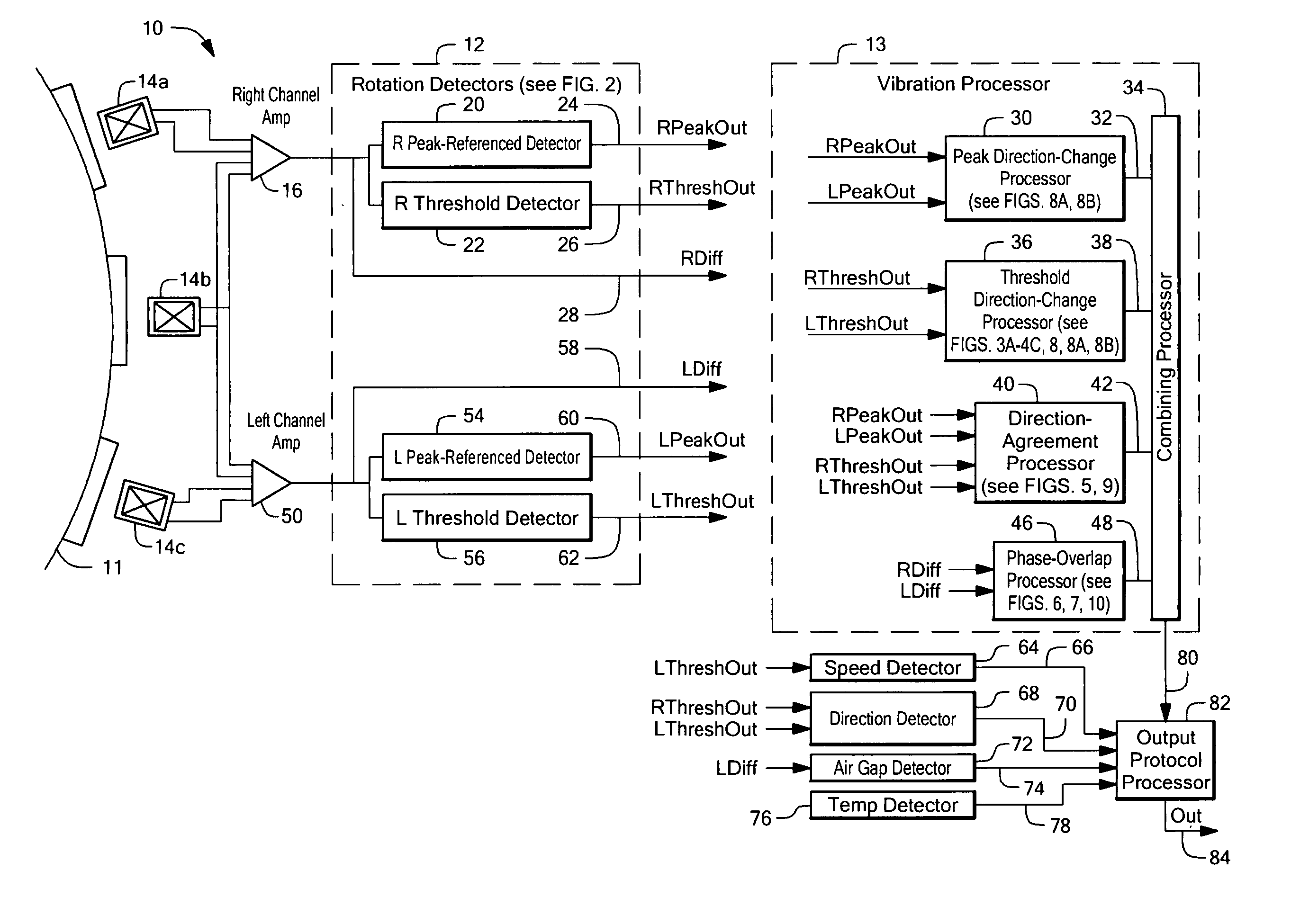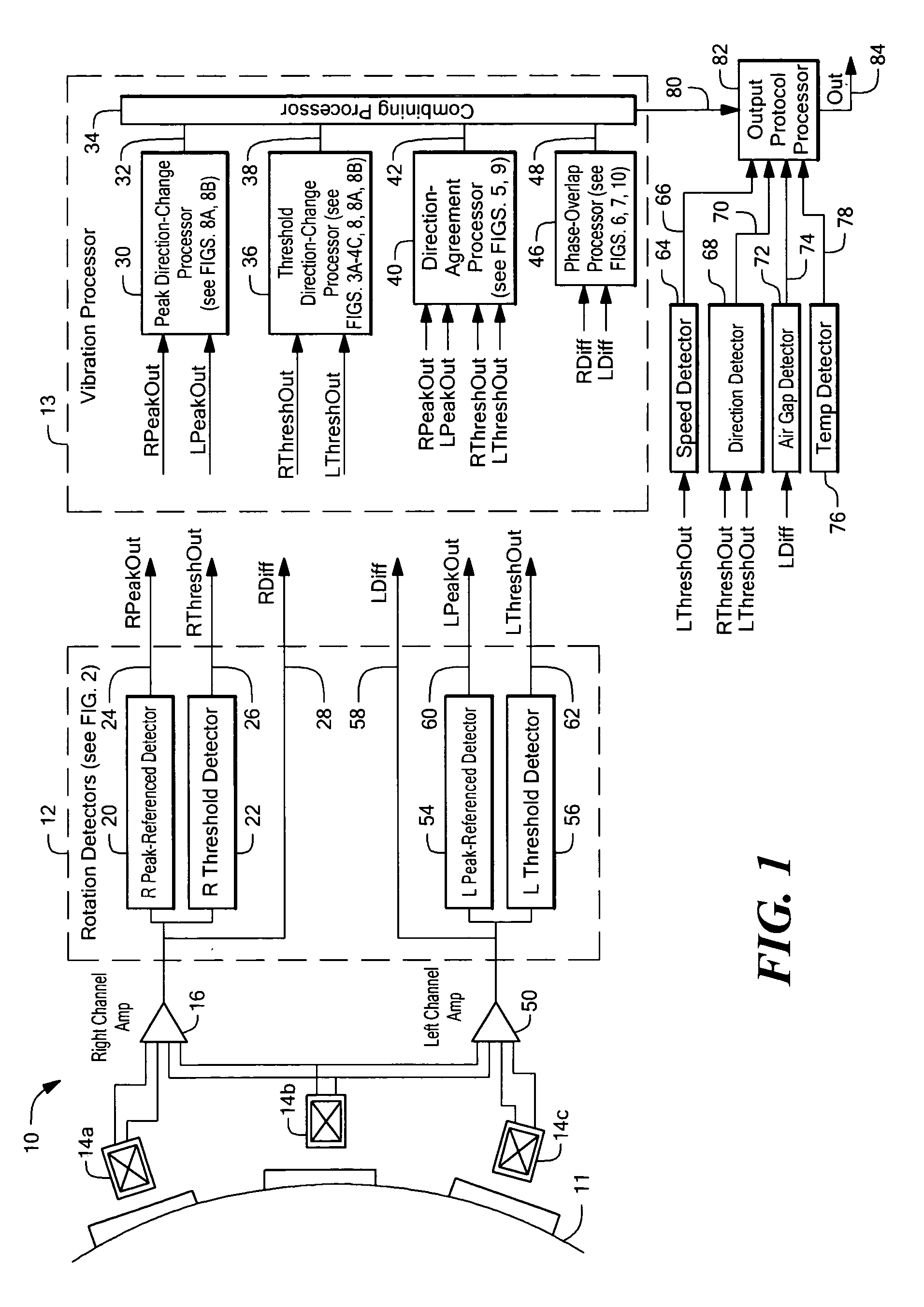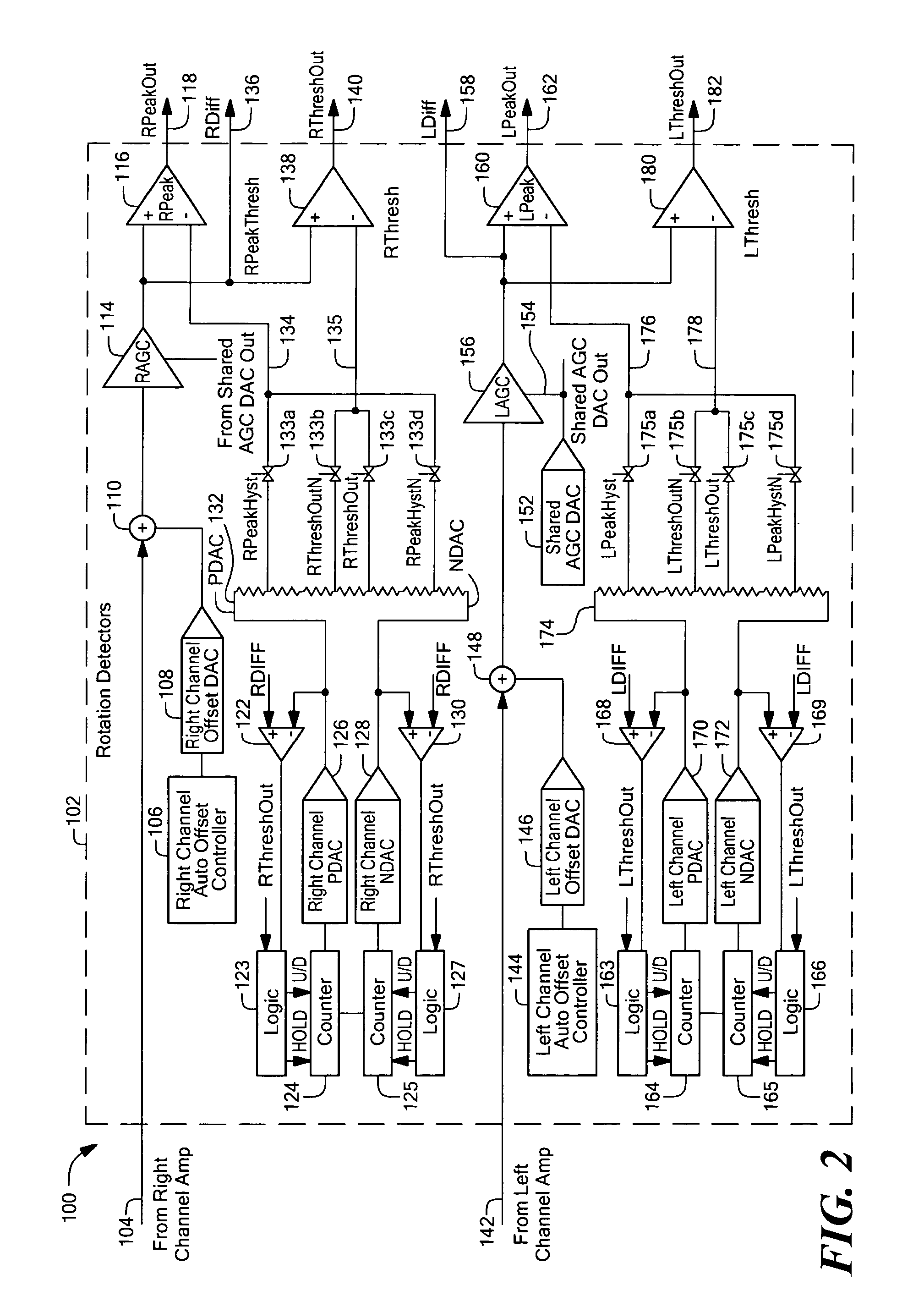Methods and apparatus for vibration detection
a vibration detection and apparatus technology, applied in the direction of vibration measurement in solids, material magnetic variables, instruments, etc., can solve the problems of affecting the operation of a system, proximity detectors primarily tend to experience translational vibration, and rotational vibration
- Summary
- Abstract
- Description
- Claims
- Application Information
AI Technical Summary
Benefits of technology
Problems solved by technology
Method used
Image
Examples
Embodiment Construction
[0040] Before describing the present invention, some introductory concepts and terminology are explained. As used herein, the term “rotational vibration” refers to a back and forth rotation of an object about an axis of rotation, which object is adapted to rotate in a unidirectional manner about the axis of rotation in normal operation. As used herein, the term “translational vibration” refers to translation of the object and / or of magnetic field sensors used to detect magnetic fields generated by the object generally in a direction perpendicular to the axis of rotation. It should be recognized that both rotational vibration and translational vibration can cause signals to be generated by the magnetic field sensors.
[0041] Referring now to FIG. 1, an exemplary sensor 10 includes a plurality of magnetic field sensors 14a-14c for generating an RDIFF signal 28 proportional to a magnetic field at a first location relative to an object 11 and an LDIFF signal 58 proportional to a magnetic...
PUM
 Login to View More
Login to View More Abstract
Description
Claims
Application Information
 Login to View More
Login to View More - R&D
- Intellectual Property
- Life Sciences
- Materials
- Tech Scout
- Unparalleled Data Quality
- Higher Quality Content
- 60% Fewer Hallucinations
Browse by: Latest US Patents, China's latest patents, Technical Efficacy Thesaurus, Application Domain, Technology Topic, Popular Technical Reports.
© 2025 PatSnap. All rights reserved.Legal|Privacy policy|Modern Slavery Act Transparency Statement|Sitemap|About US| Contact US: help@patsnap.com



